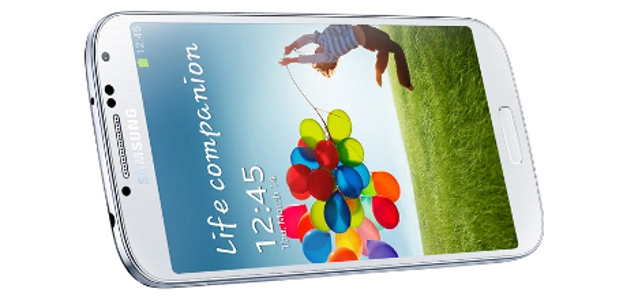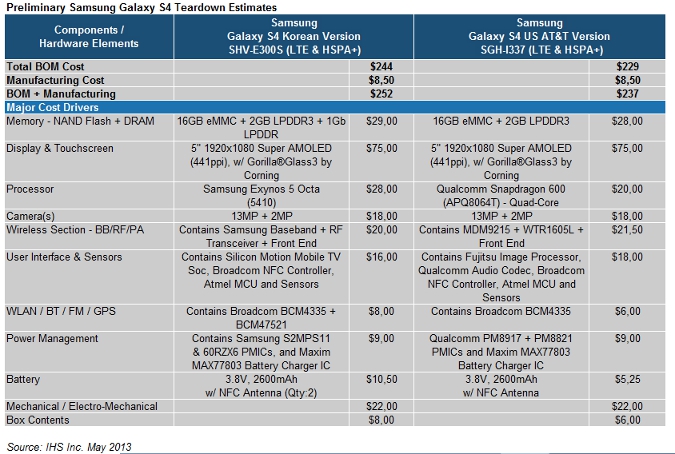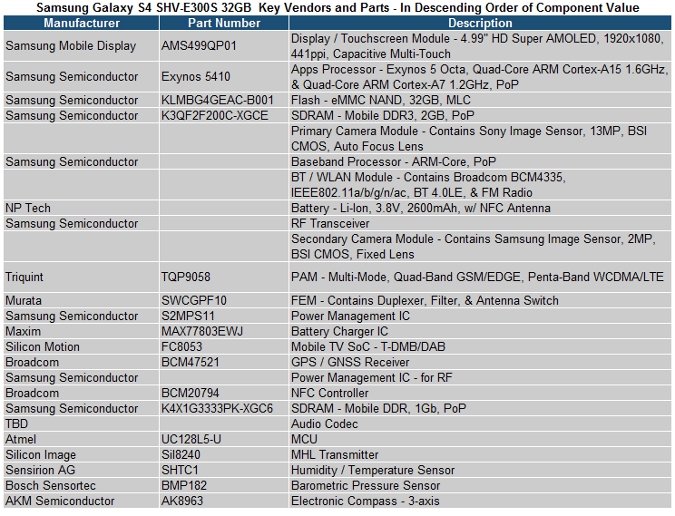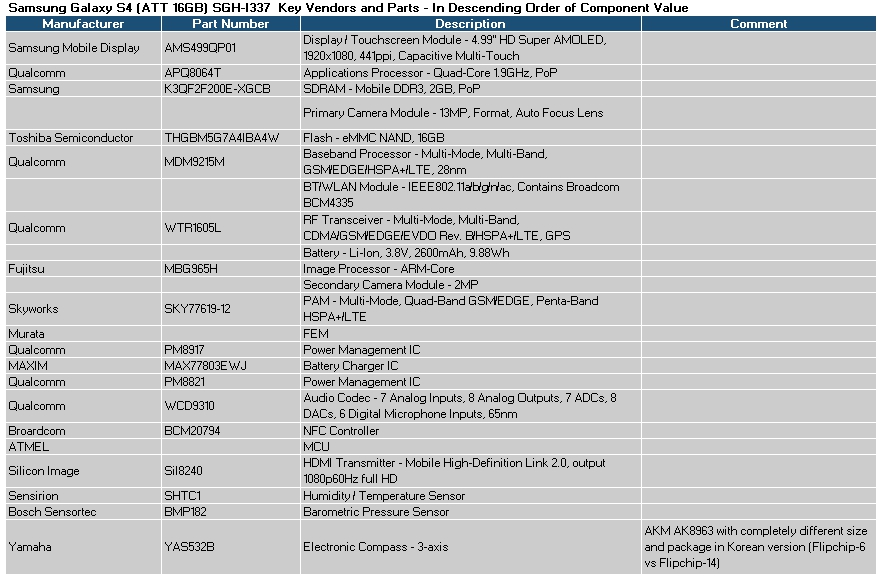
© Samsung
Analysis |
Korea vs. US - Samsung Galaxy S4
On the outside, the U.S. and South Korean versions of the Samsung Galaxy S4 look alike. But on the inside, there are major differences in key components—including the apps processor, the wireless subsystem and the user interface.
All of these permutations result in significant variations in the capabilities and pricing of the two versions of the two smartphones—as revealed by a physical dissection of the devices conducted by the IHS iSuppli Teardown Analysis Service.
The U.S. version of the Galaxy S4 with 16 gigabytes (GByte) of NAND flash memory carries a bill of materials (BOM) of USD 229.00, which rises to USD 237.00 when the manufacturing cost is added. The Korean edition with the same memory configuration has a BOM of USD 244.00 and a combined manufacturing and component cost of USD 252.00.
“With at least four different known incarnations of the Galaxy S4, Samsung is demonstrating its strategy of offering a mobile product that has appealing features and pricing—and then adapting the device to suit the tastes of varying markets or regions,” said Vincent Leung, senior analyst, teardown services, for IHS. “. “This approach is in stark contrast to the one-size-fits-all philosophy used by Apple Inc., Samsung’s primary competitor in the wireless space. While the Korean and U.S. versions of the S4 look pretty much the same and have in terms of their core electronics many same core features—such as the enclosure, display, camera and battery—the products are as different from each other as kimchee and coleslaw.”
Processor permutations
One of the biggest differences between the two versions of the Galaxy S4 is the apps processor.
The U.S. version offered by AT&T employs the Qualcomm Inc. Snapdragon 600 quad-core processor, costing USD 20.00. The Korean variation—as well as some other international versions—integrates Samsung’s own Octacore Exynos 5 processor, an eight-core device that costs USD 8.00 more at USD 28.00.
The Octacore Exynos 5 enables some unique, processor-intensive applications that are not possible with the Snapdragon processor. These include eye-movement recognition, which allows a user to pause a video simply by looking away from the S4 display.
The Octacore Exynos 5 also features the big.LITTLE architecture developed by ARM Holdings, which consists of four 1.6-gigahertz (GHz) Cortex-A15 “big” cores and four 1.2GHz Cortex-A7 “LITTLE” cores. The big cores—which deliver higher-performance capabilities and use more power—handle higher-priority tasks or those demanding computational intensity. The LITTLE cores, not as powerful and using less energy, are delegated to lower-priority or less demanding tasks.
Such a configuration allows the big.LITTLE architecture to achieve a balance of performance and power efficiency, making the Korean phone fast and allowing it a long battery life.
Less is more for wireless
The wireless subsystem of the U.S version of the Galaxy S4 costs USD 1.50 more than the Korean version. The part selection in this subsystem also varies, with the U.S. version using the MDM9215M and WTR1605L devices from Qualcomm. Meanwhile, the Korean version contains Samsung’s baseband and radio frequency transceiver and front end.
Interface the nations
More noteworthy differences can be found in the respective user interface and sensor subsystems of the Korean and U.S. versions.
The Korean S4 features a Silicon Motion Mobile TV system-on-chip device, whereas the U.S. S4 features a separate Fujitsu image processor to offload the core processor when using the camera processing.
Samsung’s Octa-core Exynos 5 likely handles the image processing itself in the Korean version, eliminating the need found in the U.S. version for a separate Fujitsu image processor within the Qualcomm solution. Interestingly, even though the Korean version has added the Mobile TV feature, its user interface and sensor subsystem still costs USD 2.00 less than the U.S. model with the added Fujitsu image processor.
On the radio
Still more distinctions can be found in the subsystems containing the wireless local area network (WLAN), Bluetooth (BT), FM radio and global positioning system (GPS).
The Korean and U.S. versions use the Broadcom BCM4335 chip. However, the Korean model requires a discrete BCM47521 from Broadcom to support GPS functionality. The extra Broadcom chip is not in the U.S. carrier version, as the Qualcomm Snapdragon provides onboard GPS functionality.
Because of this, the U.S. version’s WLAN/BT/FM/GPS section costs USD 2.00 less than the Korean version.
Samsung’s S4 supremacy
One thing that all versions of the Galaxy S4 share is their extensive use of Samsung-made componentry.
“No other company in the world has an internal supply chain like Samsung’s,” Leung said. “ “The display, memory, apps processor, baseband, RF transceiver, cameras, power amplifier and a range of other parts—all these make Samsung unique in its capability to supply key parts and capture so much value in a mobile device.”
Virtual reality
An IHS virtual teardown of the 16GByte of the U.S. version of the Galaxy S4 smartphone initially estimated its BOM at USD 233.00, rising to USD 241.00 when the manufacturing cost is added. The physical teardown mostly confirmed the pricing and design predictions made in the virtual teardown, with some minor exceptions.
© IHS iSuppli






